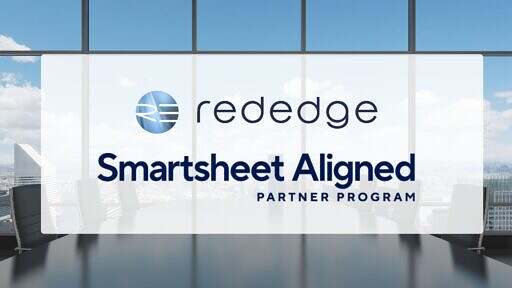

1. common CFO perceptions and pitfalls
1. common CFO perceptions and pitfalls
Most CFOs, when asked about ERP, respond with: "Twice the cost, twice the time." This scepticism is warranted-unless the business case is bulletproof. In our experience, companies often delay ERP investments until the system is end-of-life, creating pressure, reducing optionality, and pushing the business case into a secondary role. Instead, the business case should lead-not lag-the ERP decision.
2 Building the Business Case: From Pain Points to Priorities
2 Building the Business Case: From Pain Points to Priorities
Start by forming a cross-functional task force to:
- Identify and quantify pain points across the business.
- Benchmark against best-in-class companies.
- Translate findings into 5 ERP-relevant benefit dimensions.
Tip: Limit benefit targets to five. Too many targets dilute focus and complicate implementation.
The way you can group the benefits is shown above. These are relevant in an ERP context.
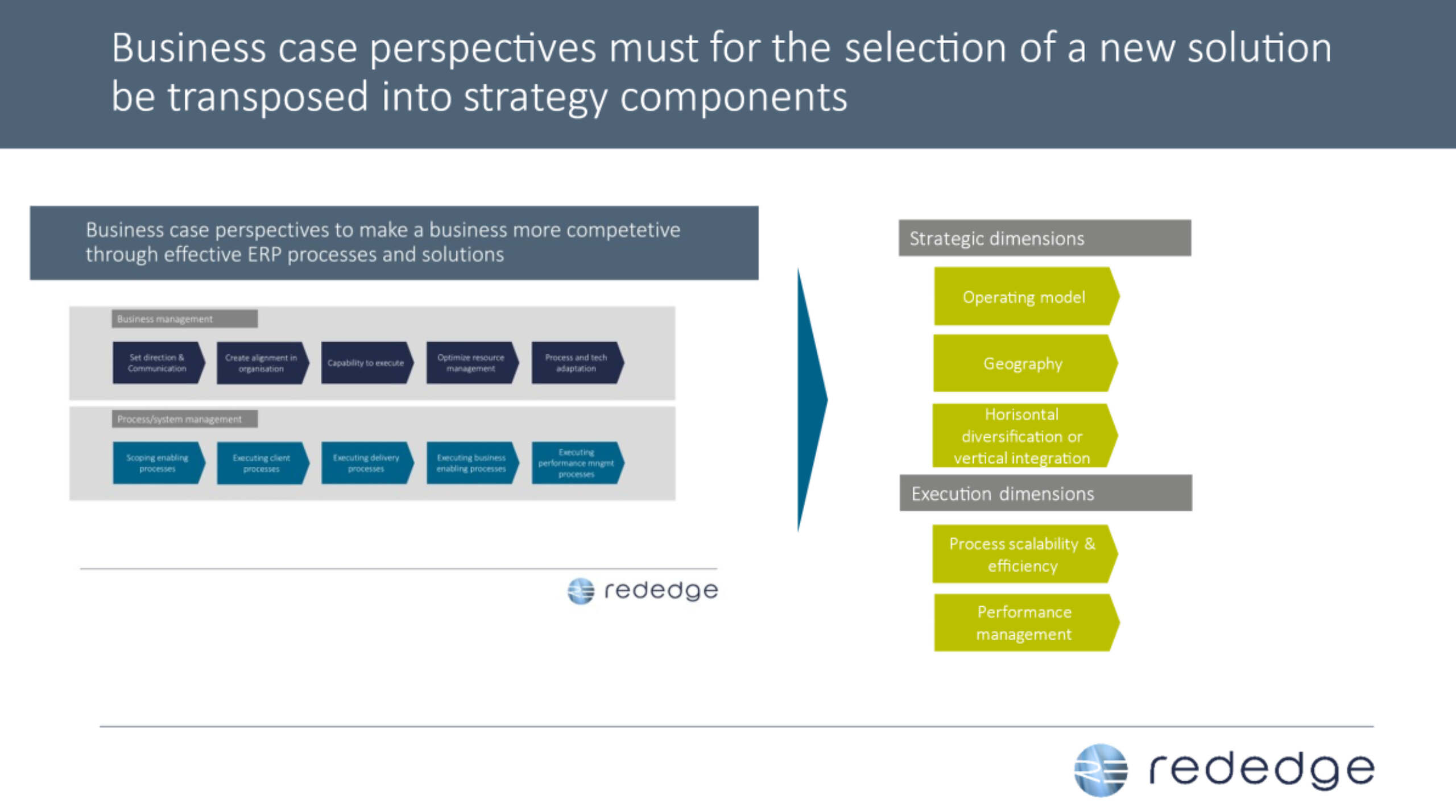
3. High-Impact Business Case Framework
3. High-Impact Business Case Framework
To build a robust case:
- Categorise improvement areas into strategic, operational, and compliance-driven needs.
- Link each to one or more of the five business value dimensions.
- Triangulate qualitative insights with quantitative data.Stakeholder involvement is essential-but aim for prioritisation, not consensus. The business case must be manageable, measurable, and actionable.
The below picture highlights what type of benefits that are common for management to strive for to motivate the investment. It is split up into the three most common starting-points companies have.
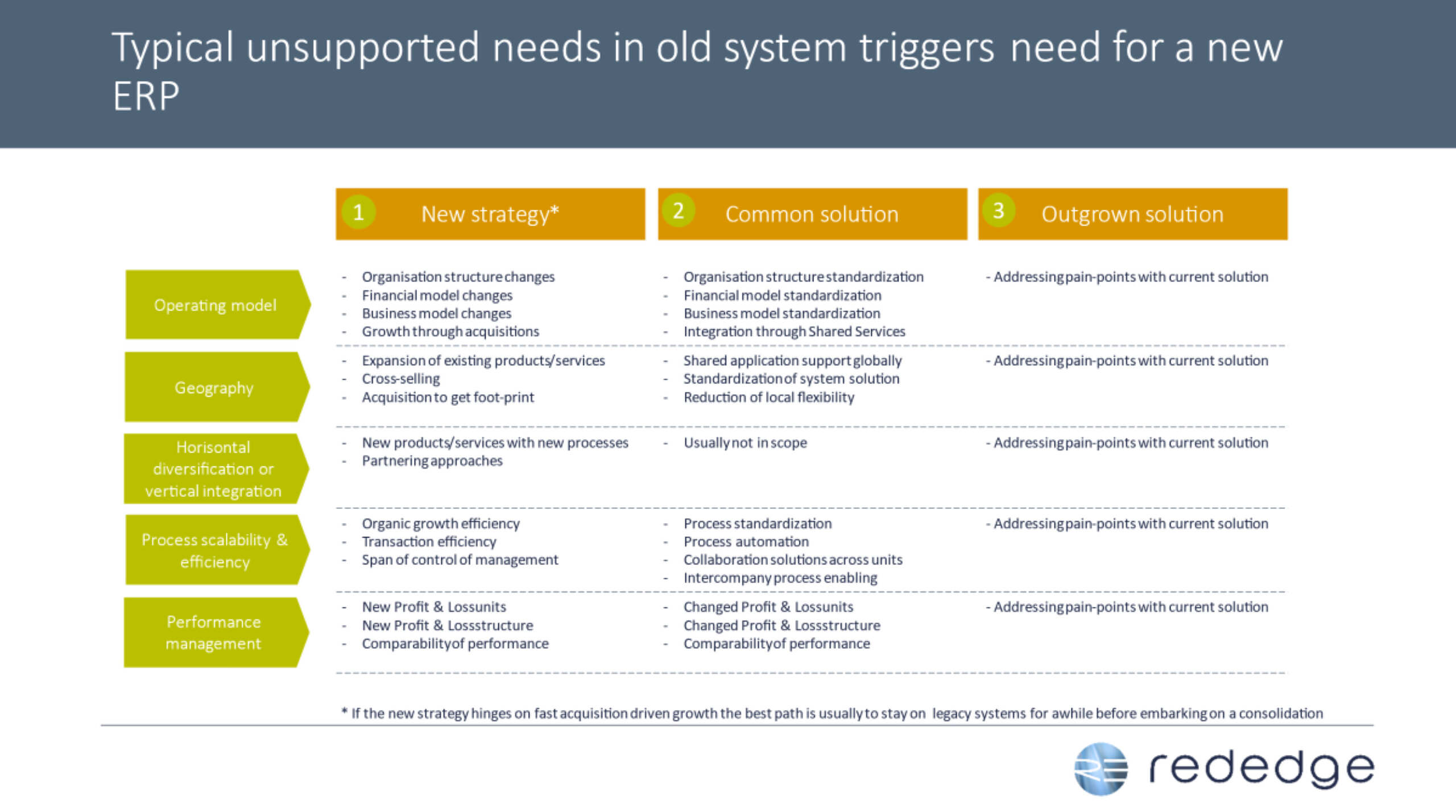
4 Target Setting: Quantify What Matters
4 Target Setting: Quantify What Matters
Start with clear hypotheses. Then refine them with:
- Baseline data from current processes
- Industry benchmarks
- Internal interviews
Focus on measurable improvements. For example:Instead of "more user-friendly system," use "Experienced users should locate a vendor invoice 50% faster."Provide target ranges (min-max) to maintain flexibility and avoid over-commitment. Aim for a positive ROI over a 5-year depreciation window, even at the conservative end of projections.
In the example below we provide some big impact benefit targets that our clients have strived for.
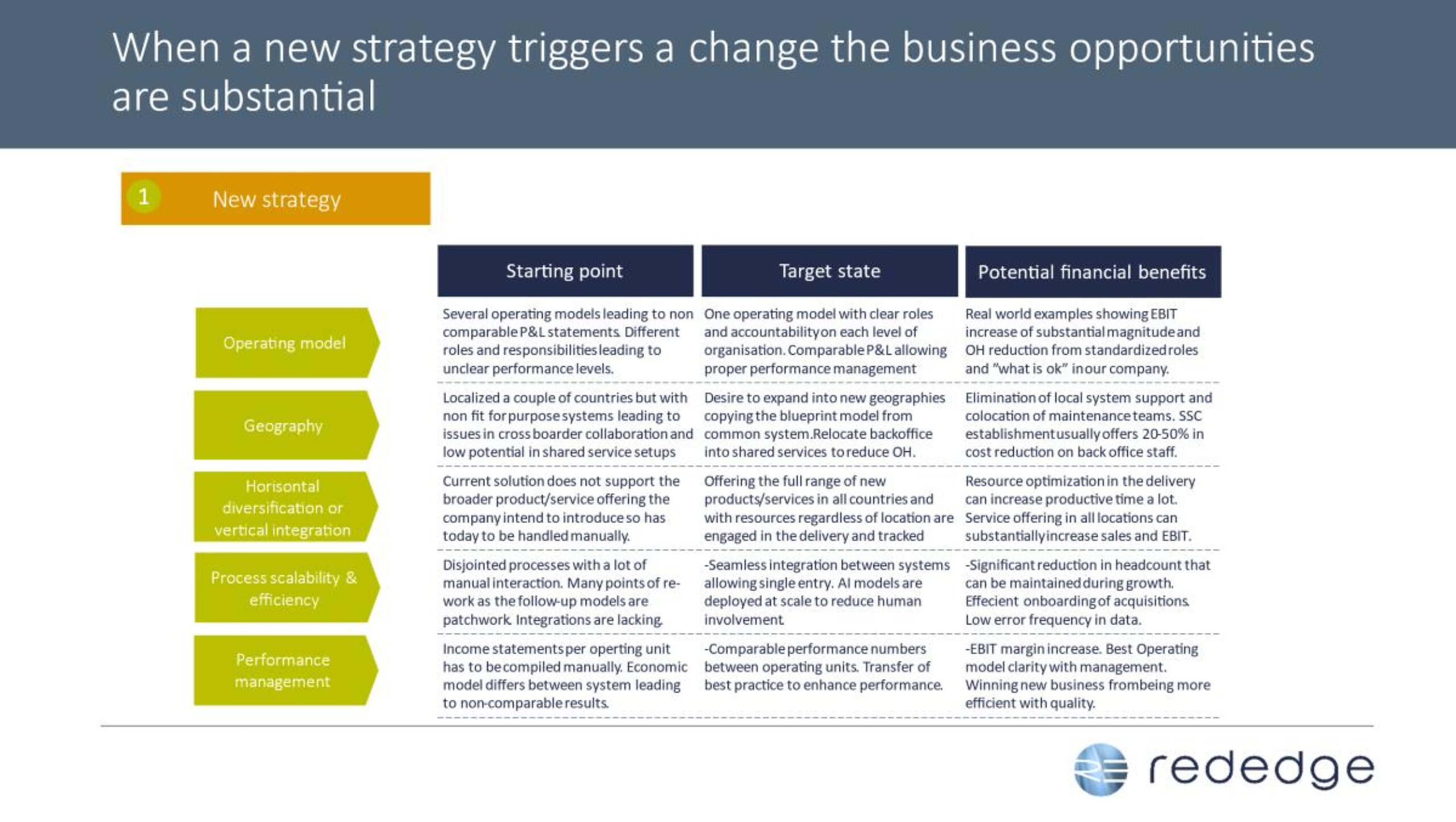
And when you prepare the detailed information we provide you with an inspiration in the picture below for how you may break down your business case in subsets.
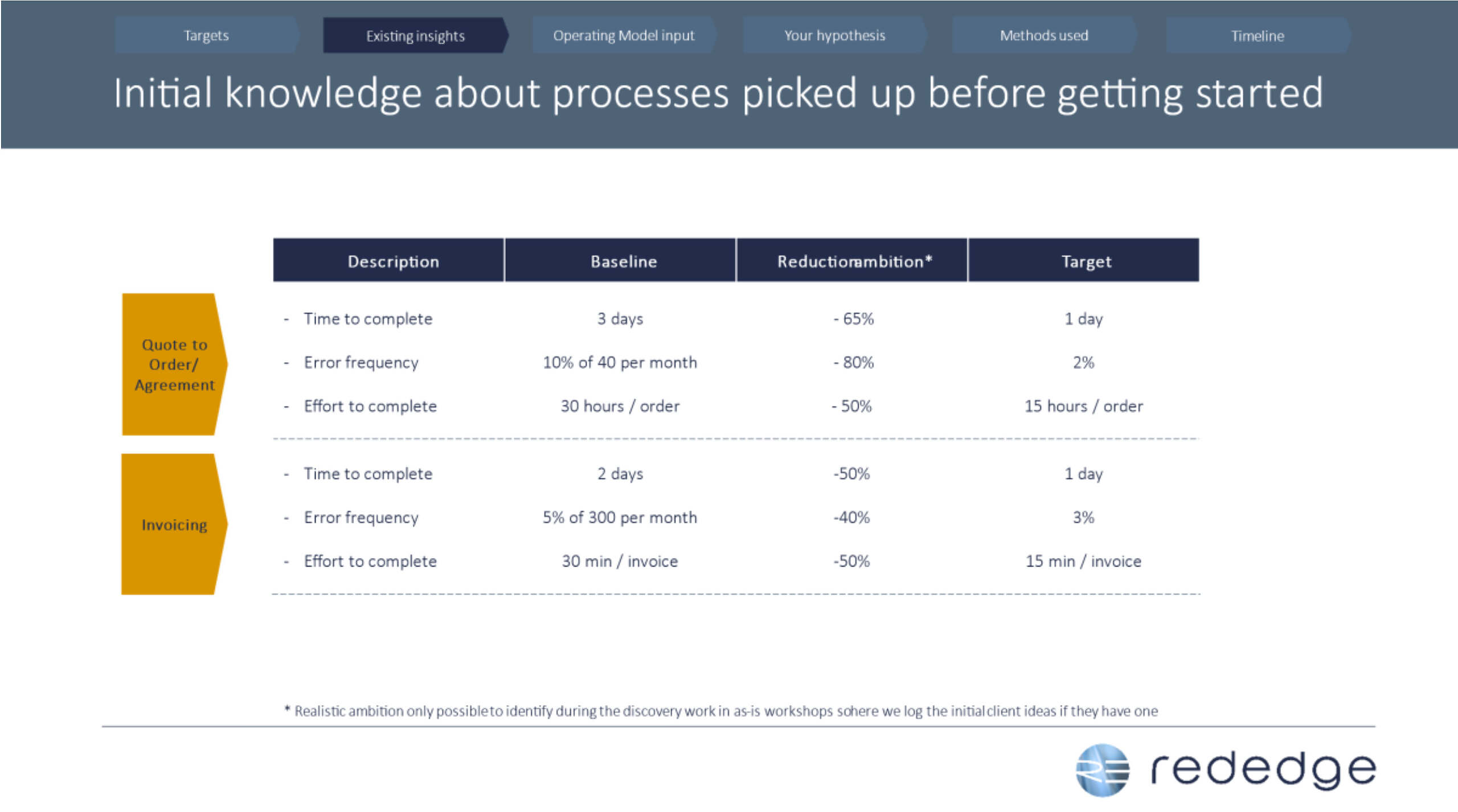
5 Qualitative Value: Stakeholder Benefits
5 Qualitative Value: Stakeholder Benefits
Quantitative benefits are essential- but do not overlook stakeholder value. We recommend a dedicated slide breaking down qualitative benefits by stakeholder group, such as:
- Finance: faster close, fewer errors-
- Procurement: improved visibility on spend
- Business units: quicker access to performance data
Avoid vague claims. Make every qualitative benefit concrete and operational.
6. plan and process
6. plan and process
Business Case Development Steps:
- Form core team
- Interview stakeholders
- Map pain points to strategic areas
- Prioritise 3-5 high-impact focus areas
- Validate and refine with management
- Collect baseline data
- Estimate value potential
- Present business case
7 Risk Mitigation and Governance
7 Risk Mitigation and Governance
Embed financial discipline into the ERP journey:
- Gate reviews: Reassess business case feasibility at each phase
- Cost levers: Define actions to slow or halt spend if targets slip
- Phased value capture: Prioritise high-ROI components early
- Resourcing: Use a mix of internal and skilled external consultants
8. change management: start early
8. change management: start early
ERP success hinges on change readiness. Begin aligning leadership and line managers during the business case phase-not after vendor selection.
The two key success factors:
- Management alignment on "what and when"
- 2. Line buy-in and belief in the "why" Change starts the moment a need is acknowledged-not when the system is live.
👉 For more on change readiness, visit Ready Set Go


